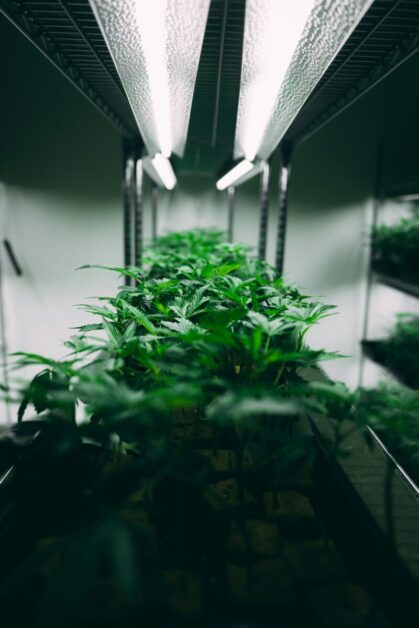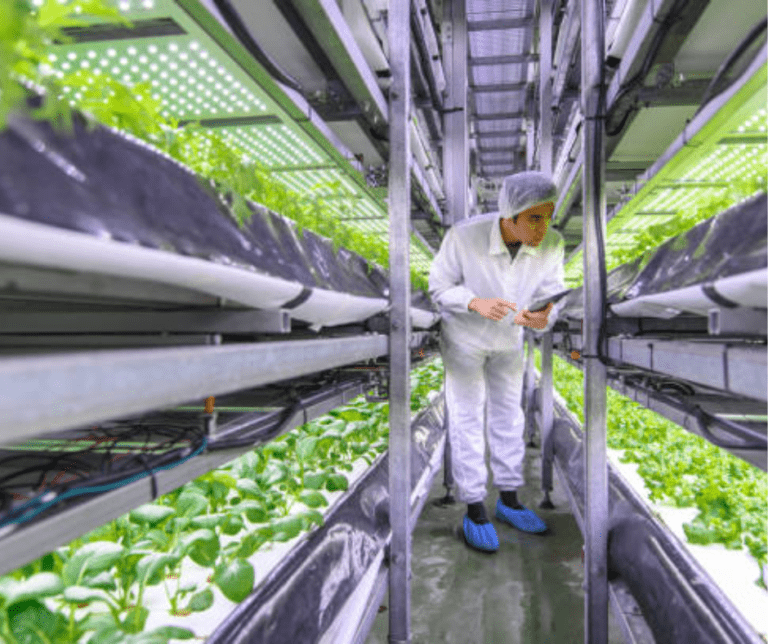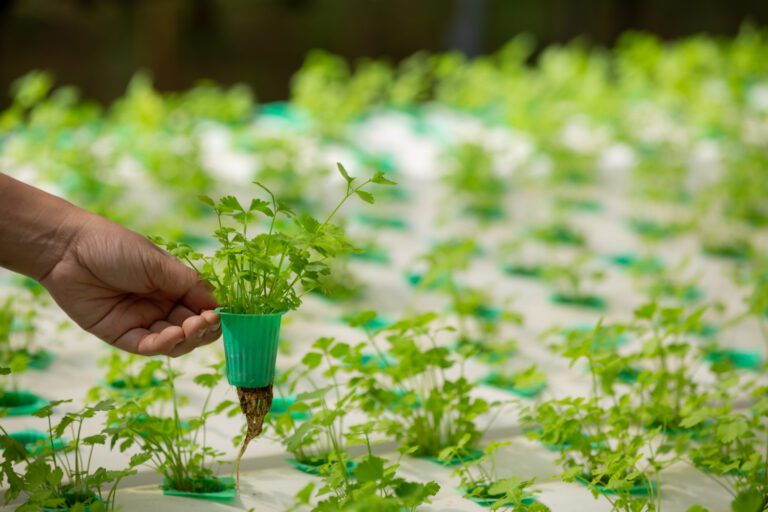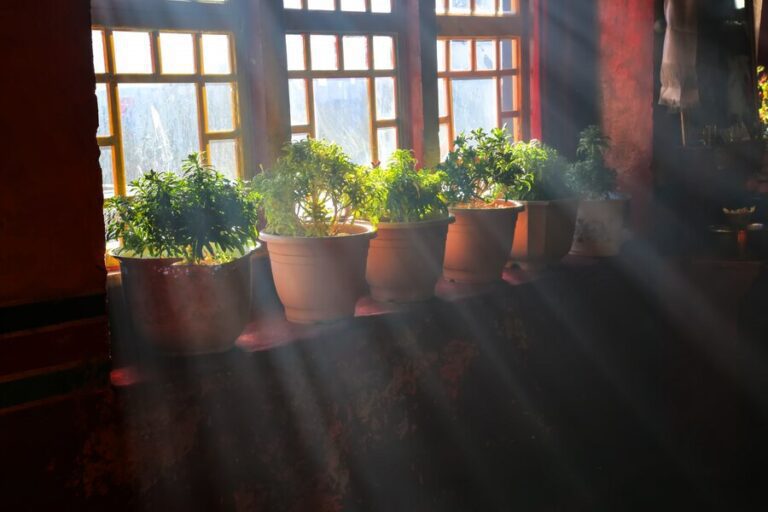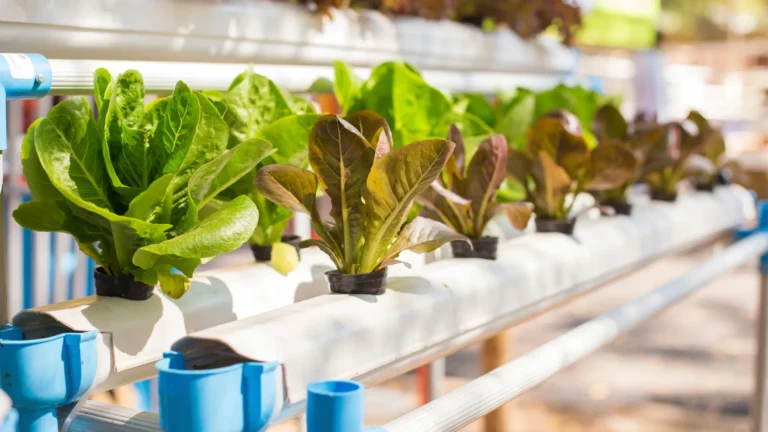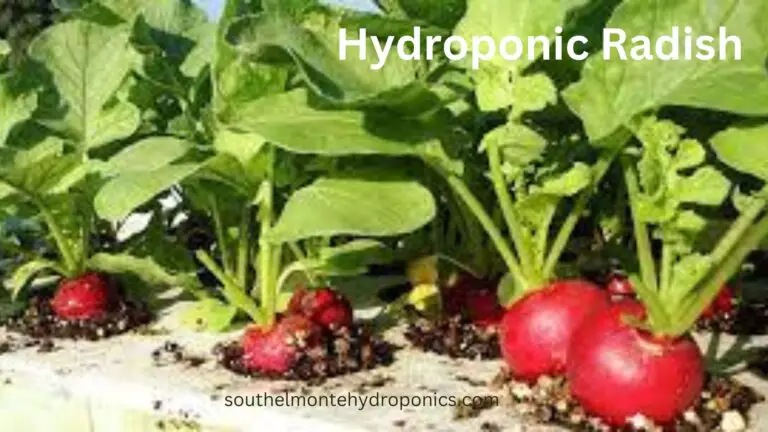Energy-Efficient Hydroponic Grow Lights: How to Use Them Wisely
Table of Contents
The Importance of Energy-Efficient Hydroponic Grow Lights
Hydroponic grow lights play a crucial role in the success of indoor gardening. They provide the necessary light energy for plants to carry out photosynthesis, which helps them grow and thrive. However, not all grow lights are created equal. Energy efficiency is an important factor to consider when choosing the right grow lights for your hydroponic system.
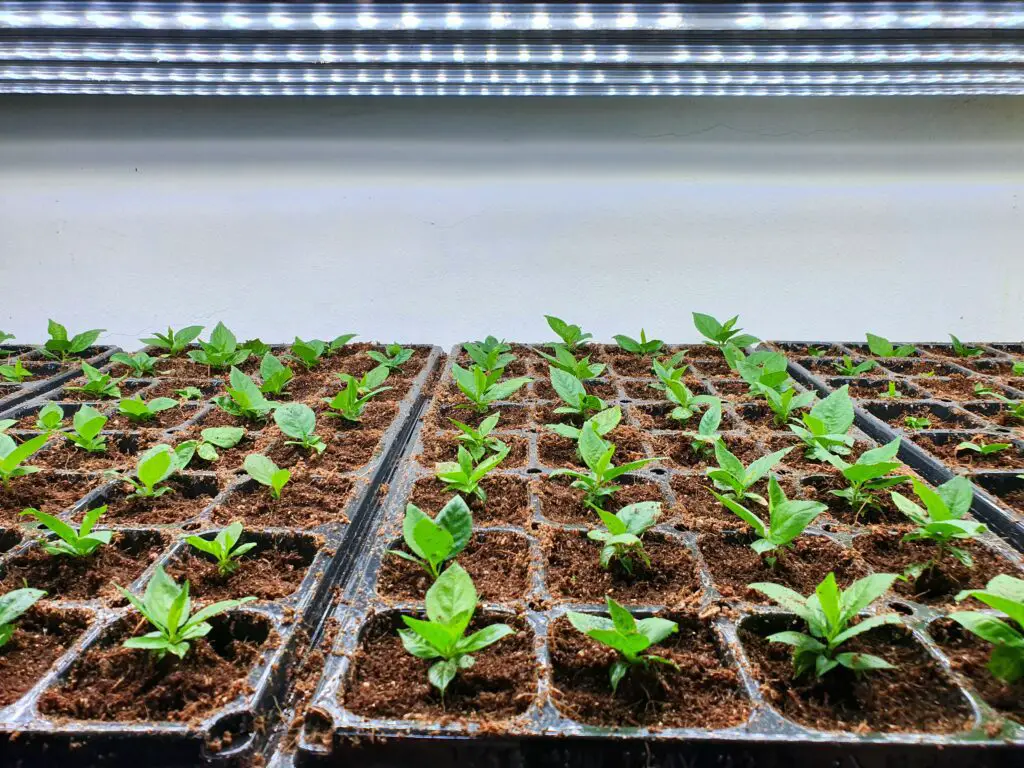
Energy-efficient hydroponic grow lights offer numerous benefits, both for the environment and for your wallet. By using less electricity, these lights help reduce energy consumption and lower greenhouse gas emissions. This not only contributes to a greener and more sustainable planet but also helps cut down on electricity costs in the long run. Additionally, energy-efficient grow lights generate less heat, reducing the need for additional cooling systems and further saving on energy expenses.
Investing in energy-efficient hydroponic grow lights not only provides a more eco-friendly solution but also offers significant cost savings and improved sustainability in indoor gardening. With the advancement of technology, there are now various types of energy-efficient grow lights available in the market, each with its own set of advantages and characteristics. In the next section, we will delve into the basics of hydroponic grow lights, exploring different types and understanding their specific features and benefits. Stay tuned to learn more about how to choose the perfect energy-efficient grow lights for your indoor garden.
• Energy-efficient hydroponic grow lights reduce energy consumption and lower greenhouse gas emissions.
• They contribute to a greener and more sustainable planet.
• Energy-efficient grow lights help cut down on electricity costs in the long run.
• These lights generate less heat, reducing the need for additional cooling systems and saving on energy expenses.
• Investing in energy-efficient hydroponic grow lights provides cost savings and improved sustainability in indoor gardening.
• There are various types of energy-efficient grow lights available in the market, each with its advantages and characteristics.
Understanding the Basics of Hydroponic Grow Lights
Hydroponic grow lights are an essential component for indoor gardening, providing the necessary light energy for photosynthesis to occur in hydroponic plants. Unlike traditional soil-based gardening, where plants get their light from the sun, hydroponic systems rely on artificial lighting to support the growth and development of plants.
The primary purpose of hydroponic grow lights is to mimic the sun’s spectrum and intensity, ensuring that plants receive the right amount and quality of light they need for optimal growth. These lights provide a balanced combination of red, blue, and white light, which can be adjusted depending on the specific stage of plant growth. By manipulating the light spectrum and intensity, growers can enhance plant productivity, control flowering and fruiting, and promote overall plant health.
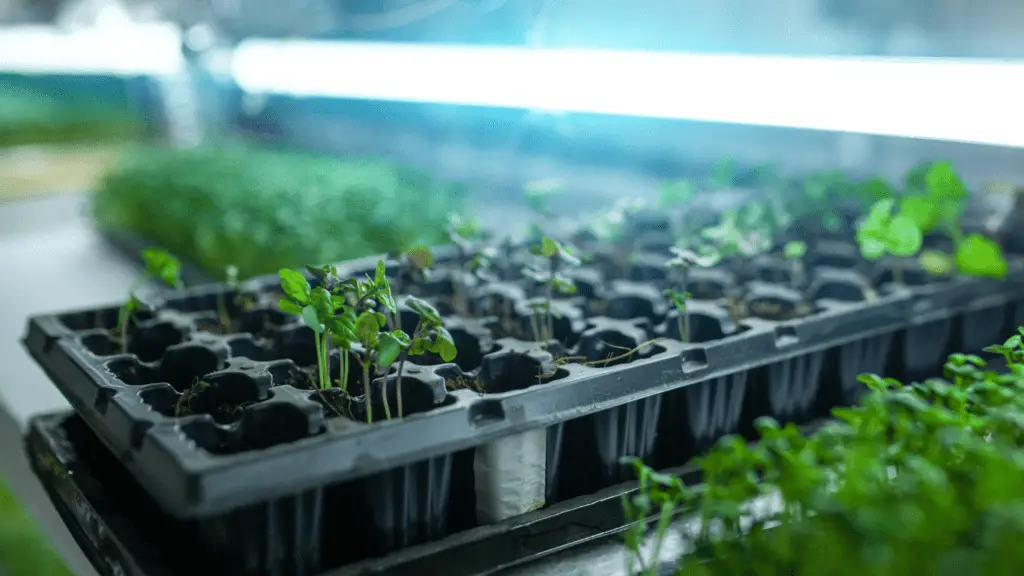
It is important to note that not all grow lights are created equal. There are different types of grow lights available in the market, each with its own set of advantages and disadvantages. The most commonly used grow lights for hydroponics include fluorescent, high-intensity discharge (HID), and light-emitting diode (LED) lights. Each type has varying energy efficiency levels, lifespan, and light output, making it crucial for growers to understand their specific needs and goals before choosing the right type of grow lights for their hydroponic system.
• Hydroponic grow lights are essential for indoor gardening and provide the necessary light energy for photosynthesis.
• Unlike traditional soil-based gardening, hydroponic systems rely on artificial lighting to support plant growth.
• The primary purpose of hydroponic grow lights is to mimic the sun’s spectrum and intensity.
• They provide a balanced combination of red, blue, and white light that can be adjusted based on the stage of plant growth.
• Manipulating the light spectrum and intensity can enhance productivity, control flowering and fruiting, and promote overall plant health.
• Not all grow lights are created equal; there are different types available in the market.
• The most commonly used grow lights for hydroponics include fluorescent, HID, and LED lights.
• Each type has varying energy efficiency levels, lifespan, and light output.
• It is crucial for growers to understand their specific needs before choosing the right type of grow lights.
Exploring the Different Types of Energy-Efficient Hydroponic Grow Lights
Energy-efficient hydroponic grow lights are an essential component of any successful indoor gardening setup. They provide the necessary light spectrum and intensity to promote optimal plant growth and yield. When it comes to choosing the right type of grow lights for your hydroponic system, there are several options available in the market.
One of the most popular choices is LED (Light Emitting Diode) grow lights, which have gained popularity due to their energy efficiency and longevity. LED grow lights emit specific wavelengths of light, allowing growers to customize the light spectrum based on the specific needs of their plants. These lights are known for their low energy consumption, long lifespan, and minimal heat production. Additionally, they can be easily adjusted in height and intensity, making them suitable for all stages of plant growth.
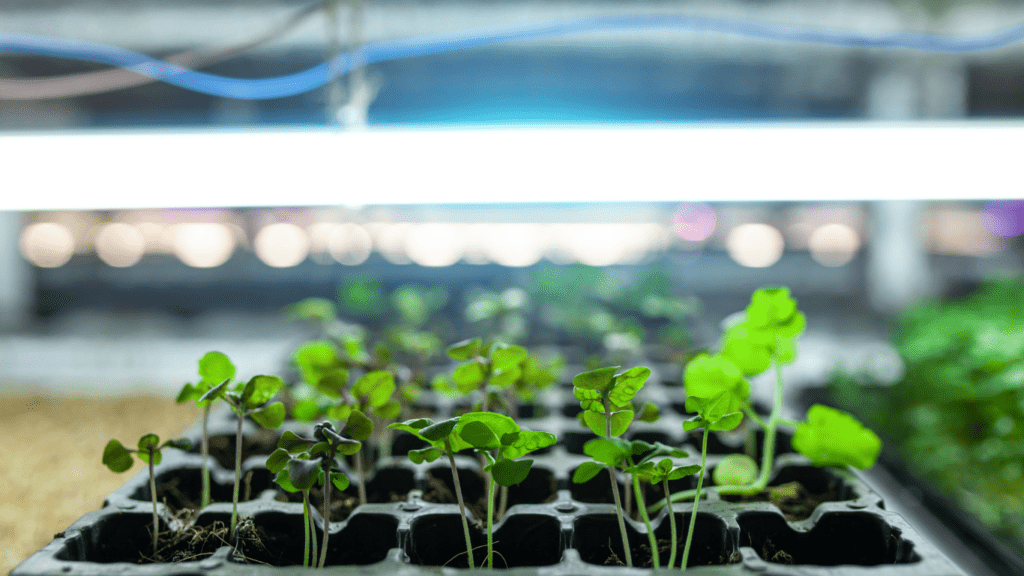
Another option to consider is fluorescent grow lights, specifically T5 and T8 fluorescent tubes. These lights are also energy-efficient and emit a balanced spectrum of light that is suitable for most plant species. Fluorescent lights are known for their affordability and versatility. They are ideal for growers on a budget or those with smaller-scale hydroponic systems. However, it’s important to note that fluorescent lights may not provide enough intensity for plants in the flowering stage or those that require high light levels.
• LED grow lights are energy-efficient and have a long lifespan
• They emit specific wavelengths of light, allowing for customization of the light spectrum
• LED lights produce minimal heat and can be easily adjusted in height and intensity
• Fluorescent grow lights, such as T5 and T8 tubes, are also energy-efficient
• They emit a balanced spectrum of light suitable for most plant species
• Fluorescent lights are affordable and versatile, making them ideal for growers on a budget or with smaller-scale systems
• However, they may not provide enough intensity for plants in the flowering stage or those requiring high light levels.
Factors to Consider When Choosing Energy-Efficient Hydroponic Grow Lights
When choosing energy-efficient hydroponic grow lights for your indoor garden, there are several key factors to consider. One important factor is the light intensity required for your plants. Different plants have varying light requirements, so it is crucial to choose grow lights that can provide the appropriate intensity for optimal growth and development. Additionally, consider the size of your garden and the space available for lighting. It is important to choose lights that can adequately cover the entire garden area and provide uniform lighting.
Another factor to consider is the light spectrum of the grow lights. Different stages of plant growth require different wavelengths of light, so it is essential to choose lights that can provide a full spectrum. For example, blue light is essential for vegetative growth, while red light promotes flowering and fruiting. Some advanced grow lights even offer customizable spectrums to meet the specific needs of different plants.
In addition to light intensity and spectrum, consider the energy efficiency of the grow lights. Opting for energy-efficient lights not only helps reduce electricity consumption but also lowers your overall operating costs. Look for lights that are ENERGY STAR certified or have high-efficiency ratings. LED grow lights, in particular, are known for their energy efficiency and long lifespan.
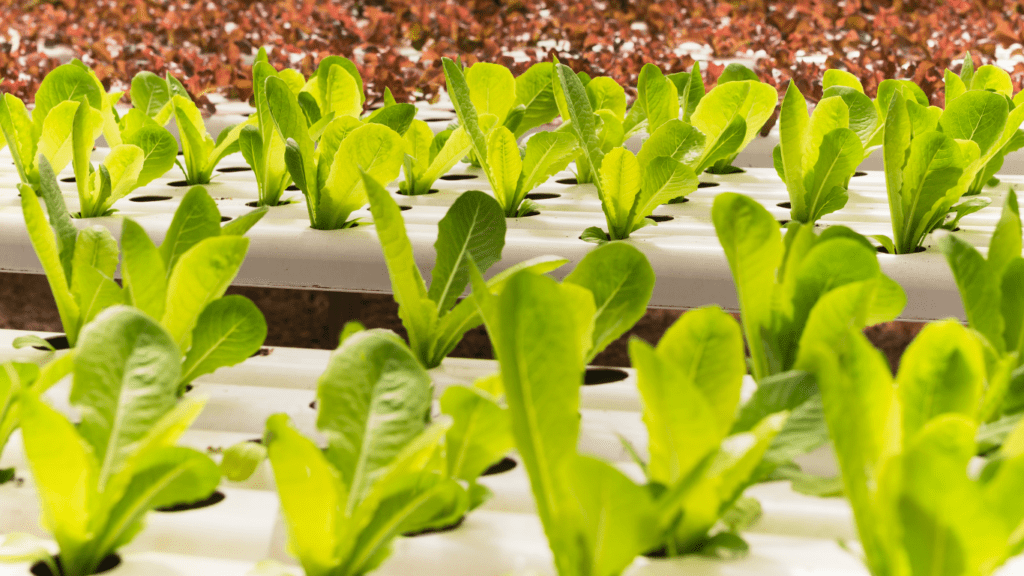
By taking into account factors such as light intensity, spectrum, and energy efficiency, you can make an informed decision when choosing energy-efficient hydroponic grow lights for your indoor garden. These considerations will ensure that your plants receive the optimal light they need for healthy and vigorous growth.
• Light intensity is a crucial factor to consider when choosing energy-efficient hydroponic grow lights. Different plants have varying light requirements, so it is important to choose lights that can provide the appropriate intensity for optimal growth and development.
• The size of your garden and available space for lighting should also be taken into account. It is essential to select lights that can adequately cover the entire garden area and provide uniform lighting.
• The light spectrum of the grow lights is another important consideration. Different stages of plant growth require different wavelengths of light, so it is necessary to choose lights that can provide a full spectrum. Customizable spectrums are also available in some advanced grow lights.
• Energy efficiency plays a significant role in reducing electricity consumption and overall operating costs. Look for ENERGY STAR certified or high-efficiency rated grow lights. LED grow lights are known for their energy efficiency and long lifespan.
• Considering factors such as light intensity, spectrum, and energy efficiency will help you make an informed decision when selecting energy-efficient hydroponic grow lights for your indoor garden.
• These considerations ensure that your plants receive the optimal light they need for healthy and vigorous growth while minimizing environmental impact and operational expenses.
Assessing the Light Requirements of Your Hydroponic Plants
To ensure optimal growth and productivity of your hydroponic plants, it is crucial to assess their light requirements accurately. Light plays a vital role in the photosynthesis process, providing the energy needed to convert water and carbon dioxide into glucose and oxygen. Different plants have varying light requirements, and understanding these requirements is essential for creating the ideal growing environment.
One important factor to consider when assessing the light requirements of your hydroponic plants is the intensity of light they need. Light intensity refers to the amount of light that reaches the planet’s surface. Some plants thrive in high light intensity, while others prefer lower levels. Determining the right intensity for your plants will help you optimize their growth and prevent issues like stunted development or light burn.
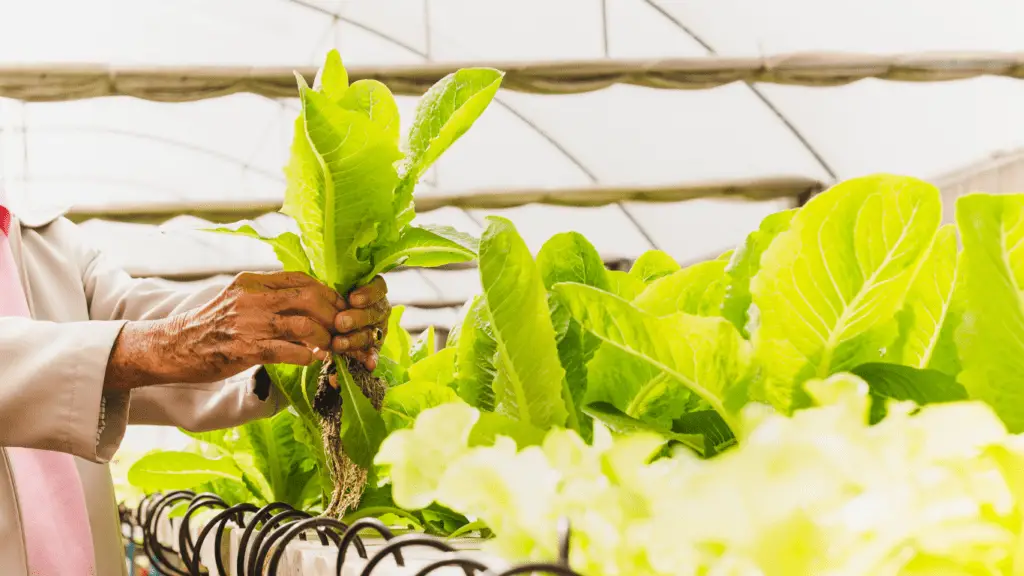
In addition to intensity, the spectrum of light is another crucial aspect to consider. Different colors within the light spectrum have varying effects on plant growth and development. For example, blue light is essential for promoting vegetative growth, while red light is necessary for flowering and fruiting. By understanding the specific light spectrum requirements of your plants, you can tailor your lighting system accordingly to maximize their growth potential.
• Light intensity is an important factor to consider when assessing the light requirements of hydroponic plants.
• Some plants thrive in high light intensity, while others prefer lower levels.
• Determining the right intensity for your plants will optimize their growth and prevent issues like stunted development or light burn.
• The spectrum of light is another crucial aspect to consider when assessing the light requirements of hydroponic plants.
• Different colors within the light spectrum have varying effects on plant growth and development.
• Blue light promotes vegetative growth, while red light is necessary for flowering and fruiting.
By understanding the specific light spectrum requirements of your plants:
– You can tailor your lighting system accordingly to maximize their growth potential.
Calculating the Proper Light Intensity for Optimal Growth
To ensure optimal growth in your hydroponic plants, it is crucial to calculate and provide the proper light intensity. Light intensity, measured in foot-candles or lux, refers to the amount of light reaching a specific area. Understanding the light requirements of your plants and adjusting the intensity accordingly can greatly impact their overall health and productivity.
Different plants have different light intensity needs based on their growth stage and species. For instance, leafy greens such as lettuce and spinach thrive in lower light intensities of around 1000-2000 foot-candles during their vegetative stage. On the other hand, fruiting crops like tomatoes or peppers require higher intensities ranging from 4000-6000 foot-candles during their flowering and fruiting stages. By calculating and providing the appropriate light intensity for each stage, you can ensure that your plants receive the necessary amount of light for optimal growth.
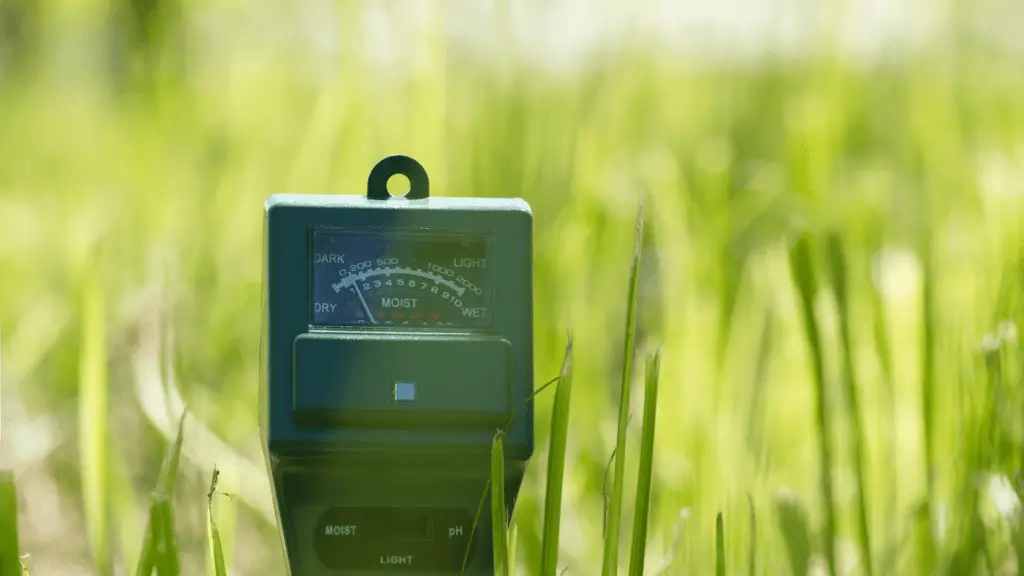
To calculate light intensity, you can utilize various tools such as light meters or lux meters. These devices measure the amount of light falling on a specific surface and give you precise readings. Place the meter at the same level as your plant canopy and take multiple measurements across the growing area to account for any variations in light distribution. By gathering accurate data, you can ensure that you are providing the right amount of light intensity for your hydroponic plants.
Remember, maintaining consistent light levels is critical for your plants’ health and development. So, it is essential to regularly monitor the light intensity and make adjustments as needed. By understanding the light requirements of your plants and effectively calculating the proper light intensity, you can create an ideal environment for optimal growth in your hydroponic garden.
• Different plants have different light intensity needs based on their growth stage and species.
• Leafy greens such as lettuce and spinach thrive in lower light intensities of around 1000-2000 foot-candles during their vegetative stage.
• Fruiting crops like tomatoes or peppers require higher intensities ranging from 4000-6000 foot-candles during their flowering and fruiting stages.
• Utilize tools such as light meters or lux meters to calculate light intensity accurately.
• Place the meter at the same level as your plant canopy and take multiple measurements across the growing area for accurate readings.
• Regularly monitor the light intensity to maintain consistent levels for optimal plant health and development.
Determining the Ideal Light Spectrum for Different Stages of Plant Growth
Determining the ideal light spectrum for different stages of plant growth is a crucial factor in maximizing the productivity and health of your hydroponic plants. Different wavelengths of light have varying effects on plant growth and development, making it essential to understand their specific requirements at each stage.
During the vegetative stage, plants primarily require blue light with a wavelength of around 400-500 nanometers. Blue light promotes strong stem and leaf growth, aiding in the development of healthy and robust plants. It also encourages the production of chlorophyll, essential for photosynthesis.
As plants transition to the flowering stage, they benefit from a shift towards red light with a wavelength of approximately 600-700 nanometers. Red light influences the formation of flowers and fruits, stimulating the blooming process. It plays a pivotal role in enhancing flowering, fruiting, and overall reproductive success.
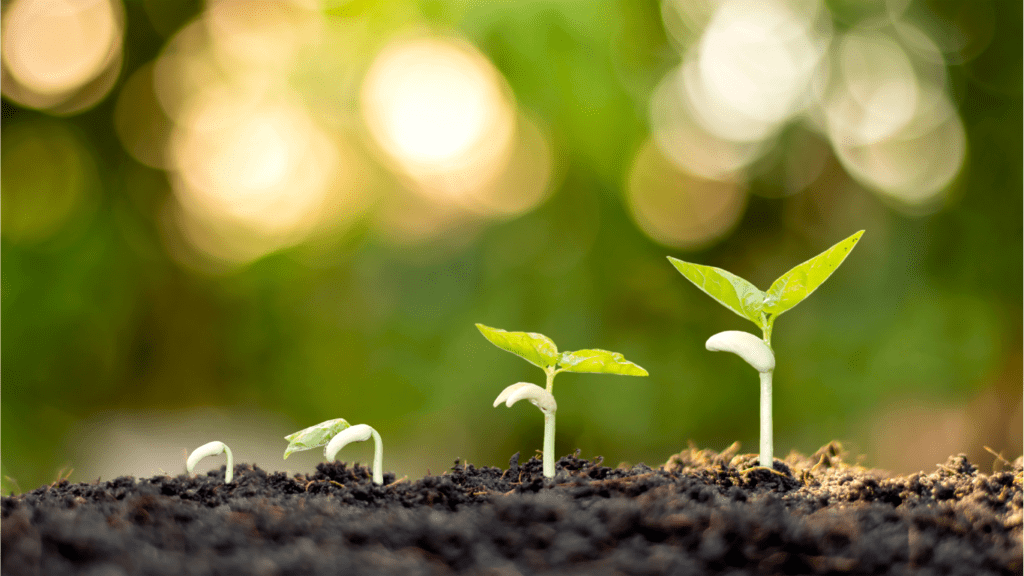
While blue and red light is the primary spectrums crucial for different stages of growth, it is also essential to provide a balanced spectrum that includes other wavelengths. Combining blue and red light with green and far-red light can further optimize plant growth, photosynthesis, and overall health. The use of full-spectrum LED grow lights that mimic natural sunlight is an effective way to achieve this balance. These lights provide a wide range of wavelengths, ensuring your plants receive all the essential spectrums throughout their growth cycle.
As you determine the ideal light spectrum for your hydroponic plants, consider investing in advanced technologies such as adjustable spectrum LED grow lights. These lights allow you to customize the light output based on the specific needs of your plants during each growth stage. By tailoring the light spectrum to your plants’ requirements, you can provide them with the optimal conditions for healthy and vigorous growth, leading to higher yields and superior crop quality.
Remember, every plant species has unique light requirements, so it is essential to research and understand the specific needs of your chosen plants. By providing the right light spectrum at each growth stage, you can ensure their growth and development are maximized, leading to a bountiful hydroponic harvest.
• Blue light with a wavelength of 400-500 nanometers is essential during the vegetative stage
• Blue light promotes strong stem and leaf growth, as well as chlorophyll production for photosynthesis
• Red light with a wavelength of 600-700 nanometers is beneficial during the flowering stage
• Red light stimulates flower and fruit formation, enhancing overall reproductive success
• A balanced spectrum that includes green and far-red light can optimize plant growth and health
• Full-spectrum LED grow lights mimic natural sunlight, providing a wide range of wavelengths
• Adjustable spectrum LED grow lights allow customization based on specific plant needs at each growth stage
• Researching and understanding the unique light requirements of your chosen plants is crucial
Setting Up Energy-Efficient Hydroponic Grow Lights in Your Indoor Garden
When it comes to setting up energy-efficient hydroponic grow lights in your indoor garden, there are a few key considerations to keep in mind. First and foremost, it’s important to choose the right type of grow lights that are designed specifically for hydroponic systems. LED grow lights are a popular choice due to their energy efficiency and customizable spectrum options. These lights use significantly less electricity compared to traditional lighting sources, making them a cost-effective and sustainable choice for your indoor garden.
Once you’ve selected the appropriate grow lights, placement, and positioning are crucial for maximizing their efficiency. The lights should be positioned at the right height and angle to ensure uniform light distribution across all plants. Make sure to provide adequate space between the lights and the plants to avoid burning or shading. It’s also important to consider the light cycles and timing for your hydroponic plants, as different stages of growth require varying amounts of light exposure. By carefully aligning the light cycles with your plants’ needs, you can optimize their growth and overall productivity.
• Choose LED grow lights designed specifically for hydroponic systems
• LED grow lights are energy-efficient and have customizable spectrum options
• LED lights use less electricity compared to traditional lighting sources
• Proper placement and positioning of the grow lights is crucial for maximum efficiency
• Ensure uniform light distribution across all plants by positioning the lights at the right height and angle
• Provide adequate space between the lights and plants to avoid burning or shading
• Consider the light cycles and timing for your hydroponic plants to optimize growth
and productivity
Proper Placement and Positioning of Grow Lights for Maximum Efficiency
Proper placement and positioning of grow lights is crucial to ensure maximum efficiency in your hydroponic system. The goal is to provide your plants with the optimal amount and intensity of light for their growth and development.
First and foremost, it is essential to consider the height at which the grow lights are placed above the plants. As a general rule, you should aim to position the lights approximately 12 to 18 inches above the canopy of your plants. This distance allows for sufficient light penetration without causing any damage or burning to the foliage. Keeping the lights too far away may result in insufficient light reaching the plants while placing them too close can lead to light burn and stunted growth.
In addition to the height, the angle of the grow lights also plays a significant role. Many hydroponic growers prefer to hang the lights at a slight angle, pointing towards the center of the plants. This helps to ensure that the light is distributed evenly across the canopy, reaching all parts of the plant and promoting uniform growth. By angling the lights, you can minimize the formation of shadowed areas and maximize the utilization of light energy.
• Position the grow lights approximately 12 to 18 inches above the canopy of your plants
• Avoid placing the lights too far away, as it may result in insufficient light reaching the plants
• Be cautious not to place the lights too close, as it can lead to light burn and stunted growth
• Hang the lights at a slight angle, pointing towards the center of the plants
• This helps distribute light evenly across the canopy and promotes uniform growth
• Angling the lights minimizes shadowed areas and maximizes the utilization of light energy
Understanding Light Cycles and Timing for Hydroponic Plants
Hydroponic plants, like all plants, require the right amount and intensity of light to thrive. Understanding light cycles and timing is crucial in maintaining healthy growth and maximizing yields in a hydroponic system. Light serves as the energy source for plants during photosynthesis, the process through which they convert light into chemical energy to fuel their growth and development.
To provide optimal lighting conditions for hydroponic plants, it is important to consider both the duration and intensity of light exposure. Just as outdoor plants rely on the natural cycles of sunlight, indoor hydroponic plants benefit from a consistent and carefully regulated lighting schedule. Mimicking the natural day-night cycle is essential, as it allows plants to undergo essential biological processes such as respiration and rest.
For most plants, a light cycle consisting of 16 to 18 hours of light followed by 6 to 8 hours of darkness is recommended during the vegetative stage. This extended period of light exposure promotes energy accumulation and leaf development. During the flowering or fruiting stage, a photoperiod of 12 hours of light followed by 12 hours of darkness is typically utilized to encourage flowering and reproductive growth.
Achieving the right timing for light cycles is crucial, as disruption can negatively impact plant development and overall health. Consistency is key, as sudden changes in light duration or exposure can trigger stress responses and affect plant growth. Additionally, it’s important to match light timing with the specific requirements of each plant species, as some may have unique preferences or adaptations to different light conditions.
By understanding the importance of light cycles and timing in hydroponic systems, growers can ensure their plants receive the right amount and quality of light throughout their growth stages. This knowledge allows them to optimize plant health and achieve better yields in their indoor gardens.
• Hydroponic plants require the right amount and intensity of light to thrive.
• Understanding light cycles and timing is crucial for healthy growth and maximum yields in hydroponic systems.
• Light serves as the energy source for plants during photosynthesis, converting light into chemical energy for growth.
• Mimicking the natural day-night cycle is essential for indoor hydroponic plants to undergo essential biological processes such as respiration and rest.
• During the vegetative stage, a light cycle of 16 to 18 hours of light followed by 6 to 8 hours of darkness is recommended.
• This extended period of light exposure promotes energy accumulation and leaf development.
• During the flowering or fruiting stage, a photoperiod of 12 hours of light followed by 12 hours of darkness is typically utilized.
• This encourages flowering and reproductive growth in hydroponic plants.
• Disruption in light cycles can negatively impact plant development and overall health, so consistency is key.
• Sudden changes in light duration or exposure can trigger stress responses in plants.
• Matching light timing with specific plant species’ requirements is important, as some may have unique preferences or adaptations to different conditions.
Managing Heat and Ventilation for Energy-Efficient Grow Lights
Effective management of heat and ventilation is crucial when it comes to using energy-efficient grow lights in your hydroponic garden. As these lights emit heat during operation, it is important to implement strategies to dissipate this heat and maintain an optimal temperature for your plants.
There are several methods you can employ to manage heat and ventilation in your grow room. First and foremost, ensure proper airflow by using fans and vents. This helps to circulate air and prevents hotspots from forming. Consider installing an exhaust fan to remove excess heat and maintain a steady temperature within the grow space. Additionally, you can strategically position your grow lights to maximize airflow and reduce the concentration of heat in specific areas. This can be achieved by spacing out your lights and avoiding their placement too close to each other or to the plants. Regular monitoring of temperature levels using a thermometer is also recommended to gauge the effectiveness of your heat and ventilation management techniques.
• Proper airflow is essential for managing heat and ventilation in a grow room.
• Use fans and vents to circulate air and prevent hotspots from forming.
• Install an exhaust fan to remove excess heat and maintain a steady temperature.
• Strategically position grow lights to maximize airflow and reduce heat concentration.
• Space out lights and avoid placing them too close together or to the plants.
• Regularly monitor temperature levels using a thermometer.
Monitoring and Adjusting Light Levels for Healthy Plant Growth
The proper monitoring and adjustment of light levels are crucial for ensuring healthy plant growth in a hydroponic system. By closely monitoring the light levels, growers can make necessary adjustments to optimize plant growth and overall productivity.
One way to monitor light levels is through the use of light meters. These devices measure the intensity of light in a given area, allowing growers to assess whether the plants are receiving sufficient light for optimal growth. By regularly measuring light levels at different points in the growing area, growers can identify any areas with inadequate lighting and make necessary adjustments to ensure uniform light distribution.
In addition to monitoring light intensity, it is also important to consider the duration of light exposure. Different plants have varying light requirements, and exposure to light for the right amount of time is crucial for their growth. By keeping track of the light cycles, growers can ensure the plants receive the right amount of light for their specific needs. This can be achieved by using timers to control the duration of light exposure, providing the plants with the appropriate photoperiods for their growth stage.
By closely monitoring and adjusting light levels, growers can provide their plants with optimal growing conditions, resulting in healthy and thriving plants. Consistent monitoring, combined with the use of appropriate tools and timers, allows gardeners to fine-tune the light levels to meet the specific needs of their hydroponic plants.
• Light meters are a useful tool for monitoring light intensity in a hydroponic system.
• Regularly measuring light levels helps identify areas with inadequate lighting.
• Adjustments can be made to ensure uniform light distribution throughout the growing area.
• The duration of light exposure is also important for plant growth.
• Different plants have varying light requirements, so tracking light cycles is crucial.
• Timers can be used to control the duration of light exposure and provide appropriate photoperiods for different growth stages.
• Close monitoring and adjustment of light levels result in optimal growing conditions for healthy plants.
Energy-Saving Tips and Techniques for Hydroponic Grow Light Systems
One of the key factors to consider when using hydroponic grow lights is energy efficiency. Not only does this help reduce your overall energy consumption, but it also saves you money in the long run. Here are some energy-saving tips and techniques to optimize the efficiency of your hydroponic grow light system.
Firstly, selecting the right type of energy-efficient growth lights can make a significant difference. Light-emitting diode (LED) grow lights are highly recommended for their low energy consumption and long lifespan. Compared to traditional lighting options such as high-pressure sodium (HPS) or metal halide (MH) lights, LEDs consume significantly less energy and generate much less heat. This means you can achieve the same level of light intensity while reducing energy waste and minimizing the need for additional cooling systems. Additionally, LEDs have a wider spectrum range, allowing you to tailor the light spectrum to match the specific needs of different plant species and growth stages.
Another useful technique for energy-saving is optimizing the light cycle and timing for your hydroponic plants. By understanding the light requirements of your plants, you can adjust the duration and intensity of light exposure to maximize growth while minimizing energy waste. Most plants require around 12 to 16 hours of light per day for optimal growth. Using a timer to automate the light cycle ensures that your plants receive consistent and appropriate light exposure, without unnecessary energy consumption during the dark period. This technique not only promotes healthy plant growth but also helps you save energy by avoiding unnecessary lighting hours.
• Selecting energy-efficient LED grow lights can significantly reduce energy consumption and heat generation
• LEDs have a wider spectrum range, allowing for customized light spectra for different plant species and growth stages
• Optimizing the light cycle and timing based on plants’ light requirements maximizes growth while minimizing energy waste
• Using a timer to automate the light cycle ensures consistent and appropriate light exposure without unnecessary energy consumption during dark periods
Troubleshooting Common Issues with Energy-Efficient Hydroponic Grow Lights
When it comes to troubleshooting common issues with energy-efficient hydroponic grow lights, there are a few problems that gardeners may encounter. One frequent issue is inadequate light distribution, which can result in uneven plant growth and lower yields. This can be caused by improper positioning of the grow lights or the use of insufficient or low-quality reflectors. To address this, it is crucial to ensure that the grow lights are positioned correctly and angled properly to evenly distribute light to all parts of the plants. Additionally, investing in high-quality reflectors can maximize the efficiency of the grow lights by redirecting and intensifying the light toward the plants.
Another common issue is light burn, which occurs when the plants are exposed to excessive light intensity for prolonged periods. This can lead to leaf discoloration, wilting, or even plant death. Light burn can be prevented by monitoring and maintaining the appropriate light intensity levels for the specific plant species being grown. It is essential to refer to the recommended light intensity guidelines for each growth stage of the plants and adjust the distance between the grow lights and the plants accordingly. Furthermore, ensuring proper ventilation and airflow around the plants can also help dissipate excess heat and reduce the risk of light burn.
By addressing these common issues and implementing proper troubleshooting measures, gardeners can ensure that their energy-efficient hydroponic grow lights are functioning optimally and supporting healthy plant growth.
• Inadequate light distribution can result in uneven plant growth and lower yields.
• Improper positioning of grow lights or the use of insufficient reflectors can cause this issue.
• Grow lights should be positioned correctly and angled properly to evenly distribute light to all parts of the plants.
• Investing in high-quality reflectors can maximize the efficiency of grow lights by redirecting and intensifying light towards plants.
• Light burn occurs when plants are exposed to excessive light intensity for prolonged periods.
• This can lead to leaf discoloration, wilting, or even plant death.
• Monitor and maintain appropriate light intensity levels for specific plant species being grown.
• Refer to recommended light intensity guidelines for each growth stage and adjust the distance between grow lights and plants accordingly.
- Proper ventilation and airflow around plants help dissipate excess heat and reduce the risk of light burn.
- By addressing these common issues:
- – Gardeners ensure energy-efficient hydroponic grow lights function optimally
- – Support healthy plant growth.
Best Practices for Maintaining and Cleaning Grow Lights
Maintaining and cleaning grow lights is crucial for ensuring their longevity and optimal performance in your hydroponic system. Regular maintenance not only helps to extend the lifespan of your lights but also promotes efficient energy usage and plant growth. Here are some best practices to keep in mind when it comes to maintaining and cleaning grow lights.
Firstly, it is essential to regularly inspect your grow lights to identify any signs of damage or wear. Check for loose connections, cracks, or any flickering lights. If you notice any issues, it is important to address them promptly to prevent further damage and maximize the lifespan of your lights.
Secondly, cleaning the surface of your grow lights is vital to remove dust, dirt, and other debris that can hinder light transmission. To clean your grow lights, gently wipe the surface with a soft, dry cloth. Avoid using water or any harsh cleaning agents that can damage the lights. Regular cleaning will ensure that your lights maintain their brightness and provide the necessary light intensity for your plants.
By following these best practices for maintaining and cleaning grow lights, you can enhance their performance and longevity, ultimately allowing your hydroponic plants to thrive. Stay tuned for more tips on maximizing the energy efficiency of your hydroponic grow light system.
• Regularly inspect your grow lights for signs of damage or wear
• Check for loose connections, cracks, or flickering lights
• Address any issues promptly to prevent further damage and extend the lifespan of your lights
• Clean the surface of your grow lights to remove dust, dirt, and debris that can hinder light transmission
• Gently wipe the surface with a soft, dry cloth
• Avoid using water or harsh cleaning agents that can damage the lights
• Regular cleaning will maintain brightness and provide necessary light intensity for plants
Incorporating Energy-Efficient Grow Lights into an Overall Sustainable Hydroponic System
Energy-efficient grow lights are a crucial component of creating a sustainable hydroponic system. By incorporating these lights into your setup, you can significantly reduce energy consumption while still providing the necessary light intensity for optimal plant growth.
One of the key advantages of energy-efficient grow lights is their lower energy consumption compared to traditional lighting sources. These lights utilize advanced technologies such as LED (light-emitting diode) or CFL (compact fluorescent lamp) to produce more light while using less energy. This not only helps to reduce electricity costs but also minimizes the overall environmental impact of your hydroponic system. With energy efficiency at the forefront, you can cultivate healthy plants while keeping your carbon footprint in check.
Additionally, energy-efficient grow lights often have a longer lifespan than conventional lighting options. This means you can enjoy uninterrupted light output for an extended period, saving both money and resources in the long run. These lights also give off minimal heat, reducing the need for additional cooling systems. This not only contributes to energy savings but also helps maintain an optimal temperature within your hydroponic setup. By choosing energy-efficient grow lights, you are taking a step towards creating a sustainable and efficient hydroponic system that benefits both your plants and the environment.
• Energy-efficient grow lights utilize advanced technologies like LED or CFL to produce more light while using less energy.
• Lower energy consumption of these lights helps reduce electricity costs and minimize the overall environmental impact of your hydroponic system.
• Longer lifespan of energy-efficient grow lights saves money and resources in the long run.
• These lights give off minimal heat, reducing the need for additional cooling systems.
• Choosing energy-efficient grow lights contributes to creating a sustainable and efficient hydroponic system.
Case Studies: Success Stories of Energy-Efficient Hydroponic Grow Light Users
Hydroponic systems have gained popularity among gardening enthusiasts due to their ability to produce high yields in a limited space. One of the key factors contributing to the success of hydroponics is the use of energy-efficient grow lights. Realizing the potential of these lights, many growers have implemented them in their indoor gardens with remarkable outcomes.
In a recent case study conducted at Urban Greens Farm, a hydroponic farm in the heart of the city, the integration of energy-efficient grow lights resulted in a significant increase in crop yield. By optimizing the light spectrum and intensity for each plant’s growth stage, the farm achieved a 30% boost in vegetable production compared to traditional lighting methods. What made the energy-efficient grow lights even more impressive was their impact on the farm’s energy consumption. With a reduction of up to 50% in electricity usage, Urban Greens Farm not only saved on utility bills but also contributed to a more sustainable and eco-friendly operation. These encouraging results set a precedent for other urban farmers looking to implement energy-efficient grow lights in their hydroponic systems and strive for greater efficiency and productivity.
• Energy-efficient grow lights have contributed to the success of hydroponic systems.
• A case study at Urban Greens Farm showed a 30% increase in crop yield with energy-efficient grow lights.
• The farm also experienced a reduction of up to 50% in electricity usage.
• These results highlight the potential for energy-efficient grow lights to improve efficiency and productivity in hydroponic systems.
What are the main benefits of using energy-efficient hydroponic grow lights?
Energy-efficient hydroponic grow lights help reduce electricity costs, minimize heat production, and promote sustainable gardening practices.
How can I determine the light requirements of my hydroponic plants?
It is important to research the specific light requirements for each type of plant you are growing, considering factors such as light intensity, duration, and spectrum needed for optimal growth.
What factors should I consider when choosing energy-efficient hydroponic grow lights?
Factors to consider include the light’s energy consumption, spectrum options, lifespan, coverage area, and adjustability features.
How do I calculate the proper light intensity for optimal plant growth?
Light intensity can be calculated by measuring the distance between the grow light and the plants, and considering the specific light requirements of the plants being grown.
What is the ideal light spectrum for different stages of plant growth?
Plants require different light spectra during various stages of growth. Generally, blue light is beneficial for vegetative growth, while red light promotes flowering and fruiting.
How should I position my energy-efficient hydroponic grow lights for maximum efficiency?
It is recommended to position grow lights directly above the plants, maintaining proper distance and ensuring even light distribution across the entire growing area.
How do light cycles and timing affect hydroponic plants?
Light cycles and timing play a crucial role in the growth and development of hydroponic plants. Mimicking natural day and night cycles is essential for healthy growth and productivity.
How can I manage heat and ventilation when using energy-efficient grow lights?
Proper ventilation, air circulation, and the use of cooling systems can help manage heat generated by grow lights, ensuring a suitable environment for plant growth.
How do I monitor and adjust light levels for healthy plant growth?
Regularly monitoring light levels using light meters and adjusting the intensity or duration as needed can ensure optimal growth and prevent light-related issues such as light burn or insufficient lighting.
What can I do to save energy when using hydroponic grow light systems?
Energy-saving tips include using timers to control light cycles, optimizing light levels, utilizing reflective surfaces, and investing in energy-efficient grow light models.
What are some common issues I may encounter with energy-efficient hydroponic grow lights?
Common issues include light flickering, inadequate light coverage, light degradation over time, and incorrect positioning. Troubleshooting these issues may involve checking connections, replacing bulbs, or adjusting placement.
How should I properly maintain and clean my hydroponic grow lights?
Regularly cleaning grow lights and removing dust or debris helps maintain their efficiency. Following the manufacturer’s guidelines for maintenance and replacing parts when needed is also important.
How can energy-efficient grow lights be incorporated into a sustainable hydroponic system?
Using energy-efficient grow lights is a key component of an overall sustainable hydroponic system. By reducing energy consumption and waste, growers can create a more eco-friendly and resource-efficient setup.
Can you provide examples of successful users of energy-efficient hydroponic grow lights?
Yes, the case study section of this article highlights success stories of individuals or companies who have achieved impressive results using energy-efficient hydroponic grow lights.

Kanike Sreekanth, a prolific writer at SouthElMonteHydroponics, brings a unique blend of creativity and scientific rigor to the table. With a degree in Horticulture from a prestigious institution, Kanike’s expertise spans hydroponic farming, plant biology, and agricultural sustainability. Their passion for exploring innovative cultivation methods and promoting environmental stewardship drives them to uncover new insights in the realm of hydroponics. Kanike’s writing serves as a conduit for sharing their knowledge and inspiring others to embrace alternative farming practices for a more sustainable future.

